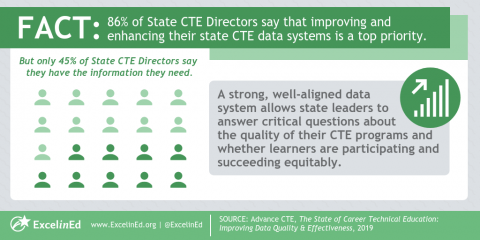

Time to end the war on coal
By Dr. Jay Lehr & Tom Harris
Several energy producers across America are taking advantage of the climate scare to try to force their customers to pay for unnecessary conversions away from dependable, inexpensive coal-fired electricity generation to unreliable and costly wind and solar power. The Wisconsin-based utility, Alliant Energy, which provides electricity to about 960,000 customers in Wisconsin and Iowa, is a case in point.
Alliant plans an 80% reduction of its carbon dioxide emissions by 2050 by closing all of its coal-fired power plants. Coal currently produces 33% of the utility’s electricity. On April 11, an Iowa Utilities Board public meeting was held to address Alliant’s short-term plan to close some of its coal power plants and replace them primarily with wind power. Alliant has petitioned the Board for a 25% hike in its base electricity rate to pay for the switch to wind power.
Approximately 60 people attended the meeting, about a dozen of whom spoke, all of them in opposition to the rate hike (primarily senior citizens saying that they could not afford higher power costs).
Alliant Energy executive Terry Kouba claimed at the meeting that fuel-cost savings achieved by switching from coal to wind power will mean customers will pay ‘merely’ 17% more in electricity costs rather than 25%. Alliant also claimed customers will eventually save money from the proposal, as year-after-year fuel-cost savings will eventually cover the upfront cost of building and emplacing new wind power equipment.
In his public comments at the meeting, James Taylor, Senior Fellow, Environment and Energy Policy at The Heartland Institute, an Illinois-based free-market think tank, pointed out that in the 18 states where coal provides the lion’s share of electricity, 15 of those 18 states have electricity prices below the national average. Kansas, Michigan, and Wisconsin are only three states where prices are above the national average. Wind power is the reason why these three states have electricity prices above the national average. Kansas has the second highest percentage of wind power in the country, while Michigan and Wisconsin are two of the five fastest-growing states for wind power.
Taylor told the meeting that Iowa wind power generation has grown five-fold during the past decade, much faster than the national average. As a result, while national electricity prices were essentially flat during the past decade (rising less than 1% per year), Iowa electricity prices rose 31% during the past decade.
Taylor also explained that, although Iowa still enjoys electricity prices below the national average – because coal still provides most electricity in the state – Alliant’s proposal would push Iowa electricity prices above the national average. Moreover, the new rate hike – on top of the 31% rate hikes already imposed by wind power – would result in a greater-than-50% increase in electricity prices due to wind power in the past decade.
Taylor challenged Kouba to sign a contractual guarantee that Alliant would reduce its rates at least 25% within the next 15 years to back up his claim that customers would eventually save money under the Alliant proposal. Kouba declined to do so. The Board will issue a decision on Alliant’s proposal later this year.
A similar situation has developed in other states where electric utilities are planning to try to replace coal plants with wind and solar largely as a result of climate change concerns. For example, the Northern Indiana Public Service Company (NIPSCO) submitted a plan to the Indiana Utility Regulatory Commission (IURC) to replace the electricity from two large coal-fired power plants with wind, solar and battery back-up, reduced demand, and power bought from other utilities. Dr. H. Sterling Burnett, Heartland senior fellow on environmental policy comments:
“While NIPSCO claims its move will save ratepayers more than $4 billion over the long run, the utility is requesting IURC approve a 12 percent rate increase to pay for the transition. Based on Energy Information Administration data, I calculated NIPSCO’s plan would cost the average Hoosier household an additional $164 per year for electricity.”
Taylor’s question at the January 28, 2019 IURC hearing discussing NIPSCO’s plan was priceless, “In what Alice-in-Wonderland universe does NIPSCO save consumers $4 billion by raising each household’s electricity bill more than $100 per year?”
This must stop. Coal has huge advantages as a fuel—it is abundant, inexpensive, easy to burn, easy to store and transport, packs a great deal of energy, and power plants can be built in a variety of sizes. And America is blessed with 22.1% of the world’s proven coal reserves, the greatest of any country and enough to last for about 380 years at current consumption rates. Mined and burned with the latest pollution control technology, coal is both clean and safe. Its time to end the war on coal.
____________________________________
Dr. Jay Lehr is Senior Policy Analyst with of the Ottawa, Canada-based International Climate Science Coalition (ICSC) and former Science Director of The Heartland Institute. Tom Harris is Executive Director of ICSC and a policy advisor to Heartland.
========================
NONVIOLENCE OR NONEXISTENCE
By Robert C. Koehler
811 words
The day before he died, Martin Luther King said these words at a packed church in Memphis:
“Men for years now have been talking about war and peace. Now no longer can they just talk about it. It is no longer a choice between violence and nonviolence in this world, it is nonviolence or nonexistence. That is where we are today.”
That’s where we are today . . . half a century later!
Here in the U.S., we have a military budget pushing a trillion dollars annually, which is a hell of an investment in nonexistence. But we also have a growing peace consciousness that cannot and must not stop until it changes the world.
One of the people working tirelessly to make this happen is Mel Duncan, co-founder of Nonviolent Peaceforce. Just over a month ago, he did his best to bring some peace consciousness to a House Appropriations subcommittee, in an effort to get funding for a global lifesaving program that’s in place in some of the most conflict-ravaged regions of the world. It’s called, simply enough, Unarmed Civilian Protection, but there’s nothing simple about what it is or how it works.
For instance, in South Sudan, according to Duncan’s statement to the subcommittee, “Nonviolent Peaceforce has a team that has grown to 200 protectors since we were invited in 2010. Since the reignition of the war in December 2013, thousands of people have been killed and millions of people have been displaced. Tens of thousands have fled to U.N. complexes where impromptu camps, known as Protection of Civilian areas, have been established. Women living in these POCs have to go to the bush to collect firewood, sometimes walking more than 30 kilometers. Soldiers from both sides often rape them. Rape is used a weapon of war.”
For some people, enduring such hell is part of life. Duncan adds, however: “What is instructive is that during a two-year period when NP’s civilian protectors accompanied them, these women were never attacked.”
Protection, he explains, isn’t just functioning as bodyguards, exuding sufficient threat of force to intimidate the bad guys and impose “peace” from the outside. Nonviolent Peaceforce “scouts the routes in advance, letting combatants know that a group of women accompanied by NP will be coming through,” Duncan points out. “Part of our ability to protect depends on being able to communicate with the combatants. If we surprise someone in the field, then we have not done our job.”
He adds that Unarmed Civilian Protection “is built on the three pillars of nonviolence, nonpartisanship and the primacy of local actors. By working nonviolently, civilian protectors do not bring more guns into environments already teeming with violence. By utilizing diverse nonviolent interventions they break cycles of retaliation. Modeling nonviolent behaviors stimulates nonviolent behavior in others. And practicing active nonviolence boosts the sustainability of peace operations and builds the foundation for a lasting peace.”
Here’s how Annie Hewitt put it at Truthout: “Nonviolent peacekeeping allows people to see humanity visibly manifested; unarmed peacekeepers must be decent and kind, they must listen actively and make all parties to a conflict feel as though they matter. In doing so, humanity is revealed to be not the property of one side or another, nor something that must be imported from outside.”
This is the sort of consciousness that lacks political traction — certainly in the United States — despite two stunning realities: It works and it’s relatively inexpensive, at least compared to the cash hemorrhage of war and war preparation. It costs Nonviolent Peaceforce about $50,000 a year to keep one peacekeeper in a given country, compared to as much as a million dollars per year for every soldier stationed in one of our war zones.
And these wars will not end by themselves — certainly not the wars that have evolved in the 21st century. Thus: “Every two seconds a person is forced to flee their home. There are now 68.5 million people who are forcibly displaced,” Duncan told the congressional subcommittee members, citing the U.N. High Commission for Refugees. This number is the highest ever, worse than World War II.
And with climate change creating environmental chaos, the collapse of social infrastructures around the planet will intensify.
“Climate disruption is mainly hitting the poorest people in the world — those who consume the least,” Duncan said. “There’s a good chance there will be more and more conflict. We have to look at ways to deal with conflict constructively and nonviolently. We have to support those approaches that are effective and affordable.”
Nonviolence or nonexistence.
We are at a point in the great human experiment at which we have to move, with all our science and technology, beyond the simplistic thinking of war. Congressional funding for a program such as Unarmed Civilian Protection — a decision on which will probably be made within a month — is a crucial step.
~~~~~~~~~~~~~~end~~~~~~~~~~
Robert Koehler, syndicated by PeaceVoice, is a Chicago award-winning journalist and editor. His book, Courage Grows Strong at the Wound is available. Contact him at koehlercw@gmail.com or visit his website at commonwonders.com.
======================
Explore ExcelinEd’s CTE playbook series for steps states can take to ensure their CTE programs lead students to successful career outcomes.